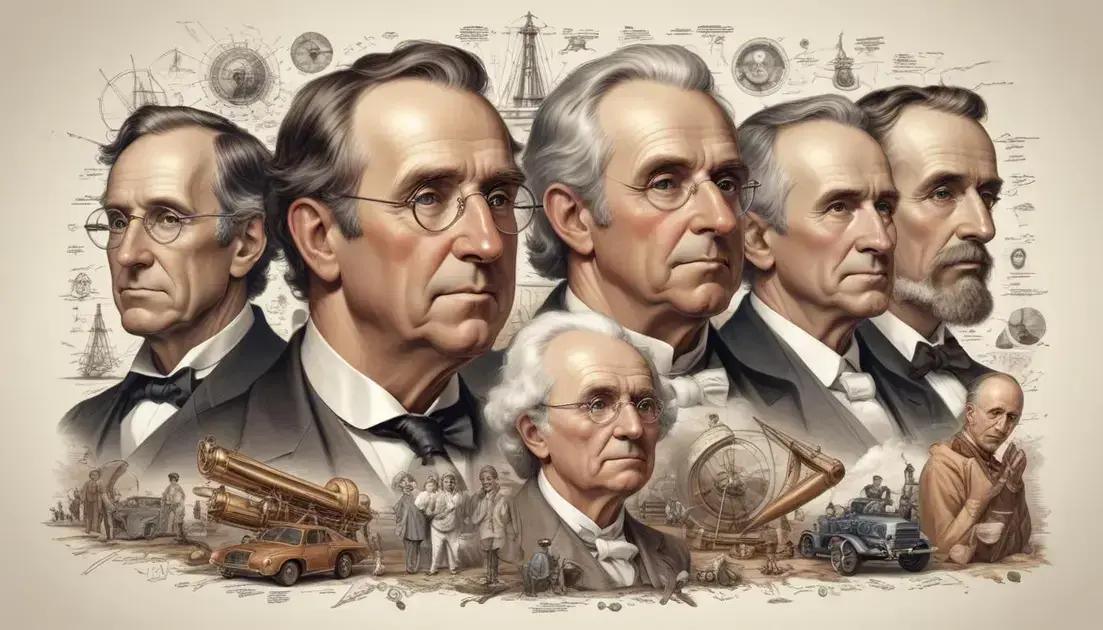
Why America keeps inventing the future
Innovation in America thrives due to the synergy of curiosity, competition, and courage. Curiosity drives individuals to explore and ask questions, leading to groundbreaking discoveries. Healthy competition among businesses encourages improvement and innovation, providing consumers with better choices. Courage allows innovators to take risks, learn from failures, and pursue transformative technologies. Together, these elements pave the way for progress, inspiring future generations to address complex challenges and create a better world.
In a rapidly evolving world, Innovation stands at the forefront of the American identity. What fuels this unending quest to invent the future? Let’s explore!
America’s drive for innovation
America’s drive for innovation is a key part of its identity. This spirit of creativity and discovery helps the country stay at the forefront of technology and progress. Many of the world’s greatest inventions come from America. It’s no surprise that people here are always looking for new ways to solve problems.
Innovation in America often starts in small groups or garages. Young people, entrepreneurs, and inventors are willing to take risks and try new ideas. These innovators work hard to turn their dreams into reality. They often face challenges, but their passion keeps them going.
From Silicon Valley to bustling cities, innovation thrives. Businesses here use the latest technologies, like artificial intelligence and renewable energy. These tools not only improve lives but also help solve big problems like climate change. Every day, new startups pop up, each with fresh ideas that can change our world.
Curiosity is one of the main drivers behind innovation. When people ask questions and seek answers, they open the door to new possibilities. This curious mindset leads to breakthroughs in science, health, and education. Schools and universities encourage this type of thinking, creating environments where students can dream big.
Another important element is competition. In America, companies compete fiercely to offer the best products and services. This competition pushes businesses to innovate continuously. When one company introduces a new gadget or service, others quickly follow. This helps create better options for everyone.
Lastly, the courage of innovators plays a huge role. It takes bravery to step into the unknown and bring ideas to life. Many entrepreneurs share their stories of failure and success. These stories inspire others to pursue their dreams, showing that innovation is possible.
As America continues its journey of innovation, it’s exciting to see what the future holds. The blend of curiosity, competition, and courage will keep driving progress. With every new idea, we take a step closer to an even more amazing future.
The role of curiosity in progress
The role of curiosity in progress is vital. Curiosity drives people to ask questions and seek answers. This is what leads to great discoveries and innovations. When people are curious, they want to learn more. They explore new ideas and challenge the ordinary.
Curiosity has inspired many inventors and thinkers throughout history. For example, famous scientists like Albert Einstein and Marie Curie were known for their curious minds. They asked bold questions and worked hard to find answers. Their curiosity helped them change the world.
In everyday life, curiosity can foster creativity. When we allow ourselves to wonder, we open our minds to new possibilities. A simple question like “What if?” can lead to amazing ideas. This is how small changes can lead to big results.
In the workplace, curiosity is equally important. It encourages teamwork and collaboration. When one person explores an idea, others are inspired to think differently. This teamwork can lead to innovative solutions that benefit everyone.
Curiosity also helps us adapt to change. In today’s fast-paced world, things are always evolving. Those who are curious tend to embrace change. They see it as an opportunity to grow rather than a challenge to fear.
Moreover, nurturing curiosity in education is essential. Schools should create an environment where students feel free to ask questions. Encouraging curiosity can lead to a love for learning. This creates a generation ready to solve future problems and drive progress.
In summary, curiosity is the fuel for progress. It inspires us to explore, innovate, and achieve. By encouraging curiosity in ourselves and others, we can build a brighter future.
Competition as a catalyst
Competition as a catalyst plays a crucial role in driving innovation. When businesses compete, they push each other to improve. This results in better products and services for everyone. Competition encourages creativity and motivates teams to think outside the box.
In many industries, the desire to be the best fuels progress. Companies strive to offer unique features that outshine their competitors. This not only helps them grow but also provides customers with more choices. When companies innovate, customers benefit from higher quality and lower prices.
Healthy competition encourages collaboration among teams. When they share ideas, they can find solutions faster. This teamwork often leads to groundbreaking results that wouldn’t happen in isolation. Sharing resources and information can spark new approaches to old problems.
Furthermore, competition drives efficiency. Businesses look for ways to do things quicker and cheaper. This can involve adopting new technologies or improving their operations. Efficiency gains not only help the company but can also positively impact the market.
However, it’s important to maintain a fair competitive environment. When competition is healthy, it leads to innovation and economic growth. But if it turns unfair, it can stifle creativity and harm consumers.
Many innovative companies began as start-ups in fiercely competitive markets. They took risks, offered new ideas, and quickly gained traction. By challenging the status quo, they reshaped industries and created new norms.
In conclusion, competition serves as a powerful catalyst for innovation. It encourages creativity, improves efficiency, and leads to better choices for consumers. Companies that embrace competition can thrive and motivate the entire industry to progress.
Courage and the frontier of technology
Courage and the frontier of technology go hand in hand. To innovate, we must embrace risk and uncertainty. Many breakthrough ideas come from people willing to step outside their comfort zones. They challenge the status quo and explore new paths.
Throughout history, courageous individuals have made big leaps in technology. Think of pioneers like Thomas Edison and Steve Jobs. They faced failures but never gave up. Their bravery to try again led to inventions that changed the world.
In the tech world today, this spirit is still alive. Startups often take bold risks to create new products. Many successful apps and gadgets started as simple ideas that required a leap of faith. Founders believed in their vision, and this belief made a difference.
Moreover, courage pushes technology forward. It motivates scientists and engineers to tackle tough problems. Issues like climate change and health care are complex. But with courage, innovators work hard to find solutions. They explore new technologies that can make a real impact.
Every day, we see new technologies arise from this courageous mindset. From artificial intelligence to renewable energy, strong ideas take shape. These technologies then transform how we live and work.
But not all technology takes off immediately. Many new inventions face skepticism. However, those with passion and courage fight for their ideas. Over time, they often win people over as their innovations prove useful and effective.
Courage also involves learning from failure. Every setback brings us closer to success. By trying again and improving, innovators can create better solutions. This cycle of courage and perseverance is vital in technology’s development.
Conclusion
In conclusion, the interplay of curiosity, competition, and courage is vital for driving innovation in technology. When we nurture curiosity, we open our minds to new ideas and solutions. Healthy competition pushes businesses to improve and offers better choices for consumers. Courage empowers individuals and teams to take risks, learn from failures, and boldly pursue groundbreaking technologies.
As we move into the future, embracing these elements can lead to remarkable advancements. Whether it’s through developing renewable energy or refining artificial intelligence, the potential for positive change is huge. By focusing on curiosity, competition, and courage, we can inspire future generations to innovate and solve the challenges of tomorrow.


